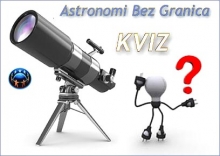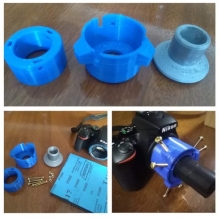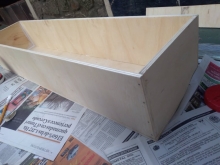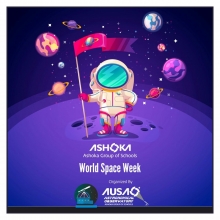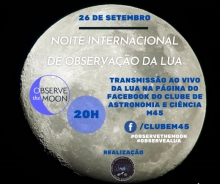There’s a Lot to See and Contemplate under the Starry Skies of the Headlands International Dark Sky Park
By Beth Anne Eckerle
Emmet County Director of Communications
Under the cover of night, the tiny Saw-whet owl emerges for its daily dalliances, feeding on mice and small mammals, mating and—during certain times of the year—migrating. It’s rarely seen, because by the time dawn breaks the Saw-whet has disappeared back into the dense plumage of its home forest.
Each spring in Northwest Michigan, bird-banders head out into the night at the Headlands International Dark Sky Park in Mackinaw City and set up mist nets to catch the strictly nocturnal Saw-whet, a tiny little creature with a catlike face, oversized head and bright yellow eyes. These researchers are looking to track migration patterns and population numbers to ensure the species’ vitality. When they’re captured in the gentle nets, they’re measured, aged, sexed, banded, photographed and released.
The Saw-whets are a living example of why protecting the dark matters; without a naturally dark wilderness, they would not survive.
While many in the conservation movement rightfully focus their attention on protecting water, land, wetlands, flora and fauna and all things tied to the Earth, conservationists in Northern Michigan have turned their heads upward to preservation of the night sky and the awe found in celebrating the dark.
Mary Stewart Adams, Dark Sky Park Program Director at the Headlands, Harbor Springs resident and stargazer extraordinaire, has spent decades studying the stories in the stars. Now, she shares her vast knowledge and her captivating storytelling abilities with the public during programs at the Headlands park, as its reputation continues to grow and thousands of annual visitors stream to events and the shoreline to gaze at the sky above. Unlike many who marvel at the night sky, Mary prefers naked-eye observation without the aid of telescopes, binoculars or other modern devices.
“You can find the stars in everything that human beings undertake,” she said. “And that's what makes it so thrilling and satisfying. I'm not an astronomer, I got my degree in English lit. My experience doesn't go toward science and telescopes. Without diminishing those things, we reinforce to people that because the sky is there over all of us, you can access it through just about any discipline or imagination you can dream of, through literature, a history of navigation, through agriculture, through religious practice, through the arts."
Considering the fact that millions of Americans now live where they can no longer see the stars of the Milky Way at night, the threat of light pollution is real, Adams said, and can have lasting effects not just on animals like the Saw-whet owls but also human beings who depend on darkness for melatonin production, healthy sleep and healthier imaginations.
"It is not out of superstition that ancient and indigenous cultures built communities and organized civic and spiritual ceremony around celestial phenomena. Still to this day, we find the stars in our activity, whether it's as farmers bringing the harvest to market, sailors making their way across the vast waters, bold moonlight inspiring artists and poets…sure, we can use technology to enhance agriculture and navigate the waters, but we are finding that our separation from reliance on natural phenomena puts us at peril of losing our way," Adams concluded. "The night sky also provides a point of cultural diversity. Every culture has star lore, meaning they ascribed to celestial events."
While some can peek out into the vastness of space with cameras and telescopes, any tangible mysteries held by the cosmos are unreachable to most. Those secrets have long captivated mankind and there remains an almost universal fascination with what is out there.
“We can contemplate vast distances, scientific theories and technological wonders. It’s all connected in our heritage. The ancient art of astrology, we must remember, was the forerunner of what became the science of astronomy,” said Tom Bailey, Executive Director of the Little Traverse Conservancy, based in Emmet County. He has spent his career protecting vast tracts of land, and he had an epiphany when his attention was turned skyward by Emmet County's dark skies initiative. Realizing that land conservation can simultaneously mean night sky preservation, Tom has since contributed greatly to the regional cause of protecting the dark sky from light pollution.
“It was the starry sky that most inspired our ancestors when they contemplated their place on the Earth and in Creation,” he continued. “These same stars have been dreamed of, sung about, worshipped, sought after and wished upon throughout the entire existence of humankind. To protect the night sky is to have not only a vast wilderness area but also a museum of science, mythology and human culture before us, every cloudless night. No admission charged and no telescope required.”
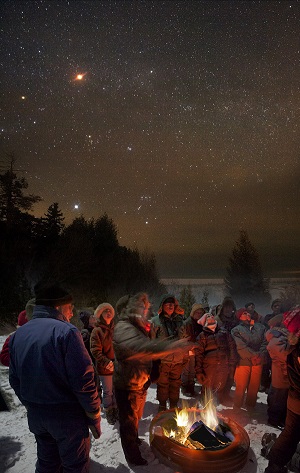 About the Headlands International Dark Sky Park
About the Headlands International Dark Sky Park
Credit: Robert de Jonge
In May 2011, Emmet County—of which the county seat is Petoskey—became home to one of less than 10 International Dark Sky Parks in the world at that time, called the Headlands. It’s a 600-acre parcel of undisturbed, rugged wilderness teeming with wildlife, old-growth forest groves, wetlands and a small lake. The park is situated on 2.5 miles of Lake Michigan shoreline at its western boundary, and five miles of natural trails wend their way through the property.
While the public has enjoyed the natural assets of this park for decades, they started looking upward a lot more often once it became a designated Dark Sky Park.
To earn this prestigious designation, Emmet County submitted a voluminous application that includes a lighting matrix of fixtures on the property’s buildings, as well as readings of the darkness level overhead using a Sky Quality Meter.
How dark is your community? You can find out by downloading a Sky Quality Meter app for Apple products and gauge for yourself! For comparison purposes, the SQM of Headlands International Dark Sky Park is 22; Petoskey’s overhead reading (in a more lighted environment than Headlands) is 18.46.
Headlands International Dark Sky Park: www.emmetcounty.org/darkskypark [email protected]









